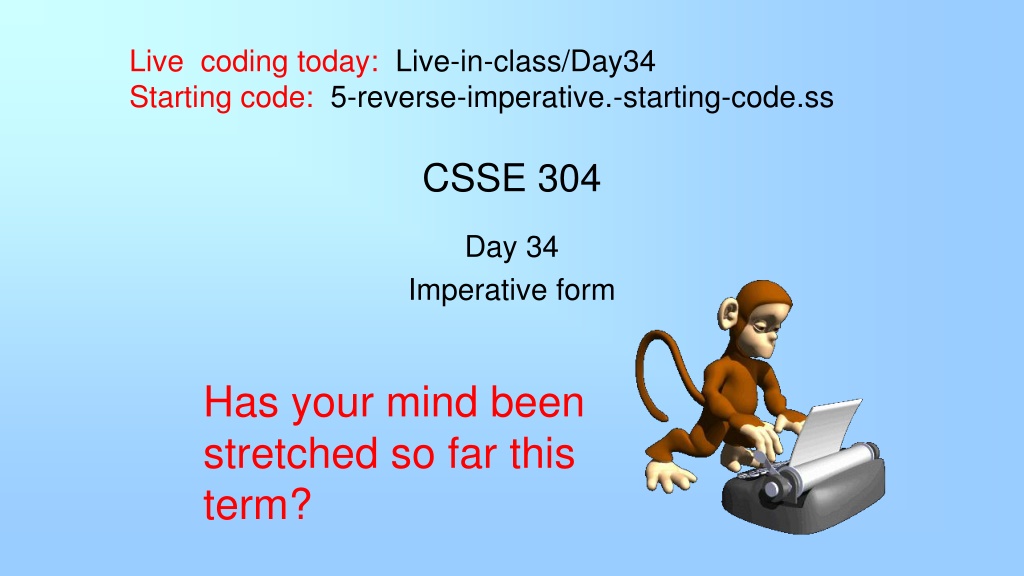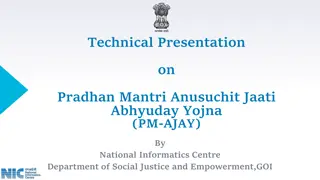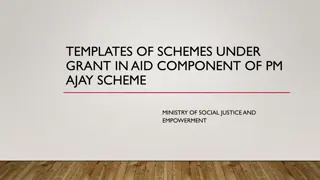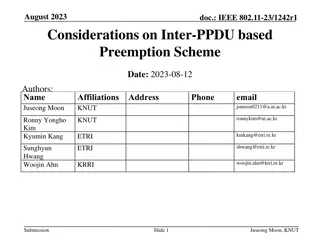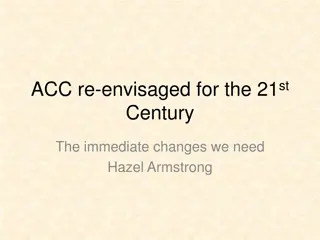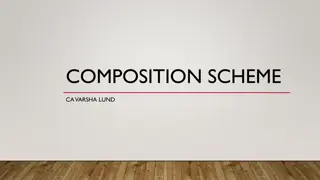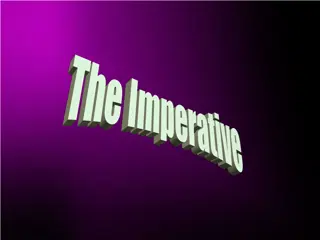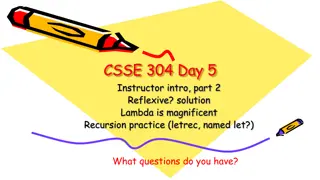Understanding Imperative Form in Scheme Programming
Delve into the world of imperative programming in Scheme, exploring the boundaries of C or Assembly Language resemblance. Discover how Scheme can serve as a robust language for interpreter implementation and contemplate if a simpler language without first-class procedures would suffice for Assignment 18. Dive deep into transforming a simple example and converting it to Continuation-Passing Style (CPS), uncovering the essence of representing continuations as Scheme procedures with detailed examples. Explore the intricacies of with tracing as you navigate through the reverse and append functions, unraveling the complexities of Scheme programming.
Download Presentation

Please find below an Image/Link to download the presentation.
The content on the website is provided AS IS for your information and personal use only. It may not be sold, licensed, or shared on other websites without obtaining consent from the author. Download presentation by click this link. If you encounter any issues during the download, it is possible that the publisher has removed the file from their server.
E N D
Presentation Transcript
Live coding today: Live-in-class/Day34 Starting code: 5-reverse-imperative.-starting-code.ss CSSE 304 Day 34 Imperative form Has your mind been stretched so far this term?
Imperative form As close to C or Assembly Language as we can get in Scheme
Implementation environment Scheme is a great language to use when implementing an interpreter. But does it do too much for us? Could we easily write the Assignment 18 interpreter in a simpler language? One without first-class procedures?
A simple example The interpreter involves a lot of code, so we will look at transforming a simple example. The same ideas will work to transform the interpreter, but most of you don t have time to do that this term. The code in these slides is linked from today s Resources column in the Schedule Page.
A simple example Next: convert to CPS
Convert to CPS form part 1 Represent continuations as Scheme procedures
Convert to CPS form part 2 Represent continuations as Scheme procedures
with tracing (trace-define reverse*-cps (lambda (L k) (if (null? L) (k '()) (reverse*-cps (cdr L) (trace-lambda cdr-k (reversed-cdr) (if (pair? (car L)) (reverse*-cps (car L) (trace-lambda car-k (reversed-car) (append-cps reversed-cdr (list reversed-car) k))) (append-cps reversed-cdr (list (car L)) k))))))) (trace-define append-cps (lambda (a b k) (if (null? a) (k b) (append-cps (cdr a) b (trace-lambda append-k (appended-cdr) (k (cons (car a) appended-cdr))))))) (trace-define init-k (lambda (v) (display "answer: ") (display v) (newline)))
the trace |(car-k (d (c))) |(append-cps () ((d (c))) #<procedure>) |(apply-k #<procedure> ((d (c)))) |(cdr-k ((d (c)))) |(append-cps ((d (c))) (()) #<procedure>) |(append-cps () (()) #<procedure>) |(apply-k #<procedure> (())) |(append-k (())) |(apply-k #<procedure> ((d (c)) ())) |(cdr-k ((d (c)) ())) |(append-cps ((d (c)) ()) (b) #<procedure>) |(append-cps (()) (b) #<procedure>) |(append-cps () (b) #<procedure>) |(apply-k #<procedure> (b)) |(append-k (b)) |(apply-k #<procedure> (() b)) |(append-k (() b)) |(apply-k #<procedure> ((d (c)) () b)) |(car-k ((d (c)) () b)) |(append-cps () (((d (c)) () b)) #<procedure>) |(apply-k #<procedure> (((d (c)) () b))) |(cdr-k (((d (c)) () b))) |(append-cps (((d (c)) () b)) (a) #<procedure>) |(append-cps () (a) #<procedure>) |(apply-k #<procedure> (a)) |(append-k (a)) |(apply-k #<procedure> (((d (c)) () b) a)) |(init-k (((d (c)) () b) a)) answer: (((d (c)) () b) a) #<procedure> > (reverse*-cps '(a (b () ((c) d))) init-k) |(reverse*-cps (a (b () ((c) d))) #<procedure>) |(reverse*-cps ((b () ((c) d))) #<procedure>) |(reverse*-cps () #<procedure>) |(apply-k #<procedure> ()) |(cdr-k ()) |(reverse*-cps (b () ((c) d)) #<procedure>) |(reverse*-cps (() ((c) d)) #<procedure>) |(reverse*-cps (((c) d)) #<procedure>) |(reverse*-cps () #<procedure>) |(apply-k #<procedure> ()) |(cdr-k ()) |(reverse*-cps ((c) d) #<procedure>) |(reverse*-cps (d) #<procedure>) |(reverse*-cps () #<procedure>) |(apply-k #<procedure> ()) |(cdr-k ()) |(append-cps () (d) #<procedure>) |(apply-k #<procedure> (d)) |(cdr-k (d)) |(reverse*-cps (c) #<procedure>) |(reverse*-cps () #<procedure>) |(apply-k #<procedure> ()) |(cdr-k ()) |(append-cps () (c) #<procedure>) |(apply-k #<procedure> (c)) |(car-k (c)) |(append-cps (d) ((c)) #<procedure>) |(append-cps () ((c)) #<procedure>) |(apply-k #<procedure> ((c))) |(append-k ((c))) |(apply-k #<procedure> (d (c))) This lets us see the flow of control as the CPS procedures execute, but we can't see the details that are hidden inside
Second Continuation representation part 1 (using define-datatype)
Second Continuation representation part 2 (using define-datatype)
Beginning of a trace (you can generate the rest yourself, using the on-line files)
End of the trace (you can generate the whole trace yourself using the on- line files)
What do we have now? Using this style, we could write the interpreter in any language that provides a means of creating records. But it would be inefficient if that language's compiler does not handle tail-recursion properly Could even result in a stack overflow. So we transform to a style in which the flow of control is really just assignments, BEGINs, IFs, and GOTOs:
Transform to Imperative form All substantial procedures will be called in tail-position, so they do not need to return. All substantial procedures will be thunks (procedures that take no arguments), thus there is no need to have stack frames that hold parameters. Thus each substantial procedure call is equivalent to a "goto" This can be implemented in almost any language.
Transform to imperative form Get the code for your section from Live-in-class. Transform to imperative form. Be sure to look at the tracing mechanism.
Where does this leave us? All we really need in order to implement things in this style: implementations of the basic data types (numbers, lists, etc.) and prim-procs record structures variable assignment if go to begin Then we could implement our interpreter in almost any language.
Exercise Start with another small piece of recursive code, and apply all of these transformations to get it into imperative form. You may be asked to do this on the final exam. You ll write imperative-form code for A19. A19 is an individual assignment
